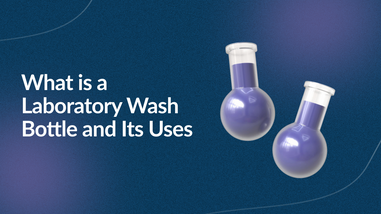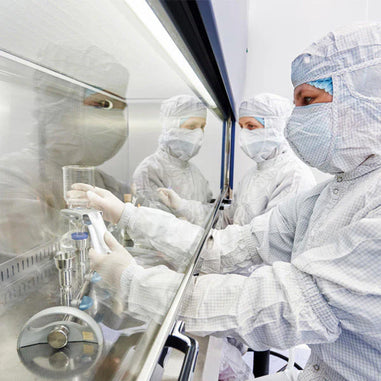- No products in the cart.
In this world filled with fast-paced innovation, it’s crucial to consistently produce high-quality results, products, or information to stay relevant – regardless of what field you’re in. In a laboratory, this consistency is even more important.
However, it’s easy to strive for consistency but more difficult to achieve it. That’s where lab efficiency comes in. An efficiently run lab can easily achieve peak output because they provide their staff with the facilities, supplies, and information needed to produce. Moreover, higher productivity doesn’t need to equate to an over-worked staff and strained work environment. Here, we break down some simple tips for labs of any field and at any stage to increase productivity without compromising on safety.
Tip #1: Believe in your staff
Everyone you hired is a motivated, capable adult that wants to help the company succeed if you let them. They just need you to provide the right tools and information. The best way to get the most out of your staff is to take feedback and suggestions from them. Keep your processes as standardized as possible, but don’t forget that the ones that perform the tasks are the best ones to find their faults. Employees who feel valued in their workspace are more likely to do their work with care.
Tip #2: Optimize lab layout and workflow
As important as employees are to a company, the design of your lab is what helps them to maximize their potential. Sketch a floor plan of your lab and map the flow of products and people. Reorganize as necessary to keep the flow going in one direction. People (or products) shouldn’t be crossing paths or going back and forth often. Rearrange things to keep the necessary equipment at the right locations to support this one-directional flow. A well-planned lab can save time and – ultimately – money.
.

Tip #3: SOPs, SOPs, and SOPs!
Standard operating procedures (SOPs) are critical to produce consistent, reliable results. The more standardized you make your process, the more reproducible the outcome will be. For every process, particularly those that are performed by multiple operators, a SOP should be established. Furthermore, establish multiple points of quality control where progress can be tracked and problems can be identified before they cripple your production. Regardless of what industry you’re in, you should always continually standardize, document, and re-assess.
Tip #4: Provide tools and training
Building off of steps 2 and 3, you should ensure that operators are trained to follow SOPs and the established workflow. When a company provides the right combination of tools and training, each task should be simple to perform and fairly error-free. Even more importantly, provide them with the right tools for the job. Many times, spending a bit more on your laboratory at setup (meaning equipment and facility) will save you money in the long run. Things like this include higher quality glassware, better lab equipment, more efficient filtration systems, etc.
If you need to budget your spending, pay attention to the future of your purchase – a well maintained, used fume hood may be just fine but a new, cheaper pipet can destroy days worth of work if it doesn’t maintain calibration consistently. Likewise, it might take a bit more time and energy to build a well-trained staff, but it will be worth it by reducing human error in your process. As an added bonus, you will reduce safety risks when your staff is well trained and confident in performing their tasks.
Tip #5: Re-evaluate regularly
In manufacturing ‘continuous improvement’ is a common buzzword for good reason. Every process can be further optimized and lab efficiency is no exception. Evaluate and re-evaluate your flow in step 2, continuously monitor your SOPs from step 3, and regularly ask for feedback from your staff. You should encourage operator feedback on processes, equipment, and SOPs in a way that is easy to report and discreet (when necessary). Continuous improvement is never ‘completed’ and regular evaluation of your processes should be regarded as a necessity.
A More Efficient Lab is a Happy Lab
By working on these five simple steps, you can help boost your lab efficiency without compromising safety during production. Set rigorous standardizations and monitor variations whenever possible. Moreover, as much as the company benefits from increased productivity, your staff will too. If you value their insights, they will feel less like machines and more like the creative, thoughtful humans that they are. Increasing productivity and lab efficiency does not need to be exclusive of a boost in company morale, and in fact is often dependent on it!
__
For over 40 years, Lab Pro has been committed to delivering a complete laboratory solution by offering the highest quality products, chemicals, reagents, microscopes and imaging equipment for our customers worldwide. Come visit the biggest Lab Supply showroom in California, or contact us online or at 888-452-2776.












































